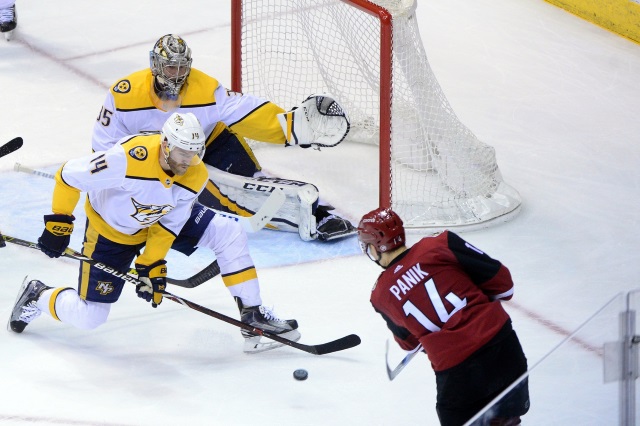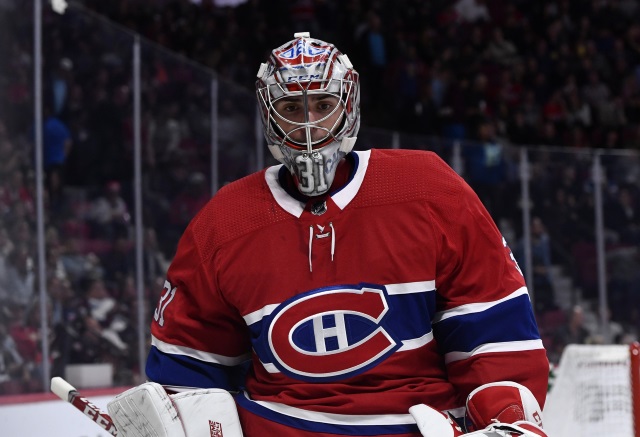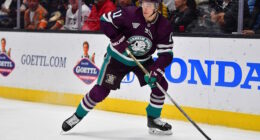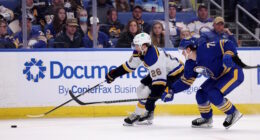As the calendar on the NHL’s 2018-19 season flipped to January, the Arizona Coyotes found themselves uncomfortably close to the bottom of the standings. With 17 wins and 36 points in 39 games, the Desert Dogs were just two points from the bottom of the league.
Over the following three months, however, the Coyotes became one of the league’s hottest teams. They won 22 of their next 43 games to finish the season with 86 points, just four points short of a wild-card spot.
It was a significant improvement over last season’s 70-point campaign. Their second-half play suggests their long-term rebuilding with young talent could be about to pay off.
Caution, however, must be taken with that assessment. Despite this season’s development, the Coyotes still missed the postseason for the seventh consecutive year.
Injuries walloped their lineup this season. Key players such as goaltender Antti Raanta, defensemen Jakob Chychrun, Jason Demers were injured. Forwards Nick Schmaltz, Derek Stepan, Alex Galchenyuk, Christian Dvorak, and Michael Grabner were all sidelined for lengthy periods.
Several of their promising youngsters also had disappointing performances. Sophomore forwards Clayton Keller and Christian Fischer saw their production decline. Lawson Crouse has yet to blossom into the power forward he was projected to become.
With a healthier roster and better numbers from their young talent, the Coyotes could become a playoff contender next season. Nevertheless, general manager John Chayka must address their obvious need for more scoring. The Coyotes’ 2.55 goals for per game ranked 29th overall while their power-play percentage (16.3) was 26th.
Ownership Uncertainty Creates Cap Constraints
Salary cap constraints could prevent Chayka from pursuing any significant acquisitions via this summer’s unrestricted free agent market. Cap Friendly indicates the Coyotes have over $74 million invested in 17 players next season.
Marian Hossa placed on LTIR helps Arizona’s cap space by over $5 million. Still, ownership could be reluctant to invest much more than they already have.
If Chayka wants to boost his scoring, he’ll have to go the trade route. Also, the general manager showed a willingness to make deals — whether big or small.
Last summer, he shipped Max Domi to the Montreal Canadiens for Galchenyuk and landed Vinnie Hinostroza from the Chicago Blackhawks. This deal bought Hossa’s contract rights. Earlier in this season, he acquired Schmaltz from the Chicago Blackhawks in exchange for center Dylan Strome and Brendan Perlini.
Stepan, Raanta, Demers, and Crouse were Chayka trade acquisitions. So were goaltender Darcy Kuemper and defensemen Niklas Hjalmarsson and Alex Goligoski.
If Chayka does make a trade, his budget constraints probably mean it’ll be dollar-for-dollar. Perhaps he’ll target clubs in desperate need of shedding salary. This includes teams willing to absorb part of a high-salaried players cap hit. Furthermore, Chayka could also make a cost-cutting deal or two of his own.
He could prefer targeting a young scorer who won’t carry a huge cap hit. Perhaps Los Angeles Kings right wing Tyler Toffoli, Minnesota Wild winger Jason Zucker, Tampa Bay’s J.T. Miller or Toronto Maple Leafs right wing Kasperi Kapanen will be on his radar this summer.





